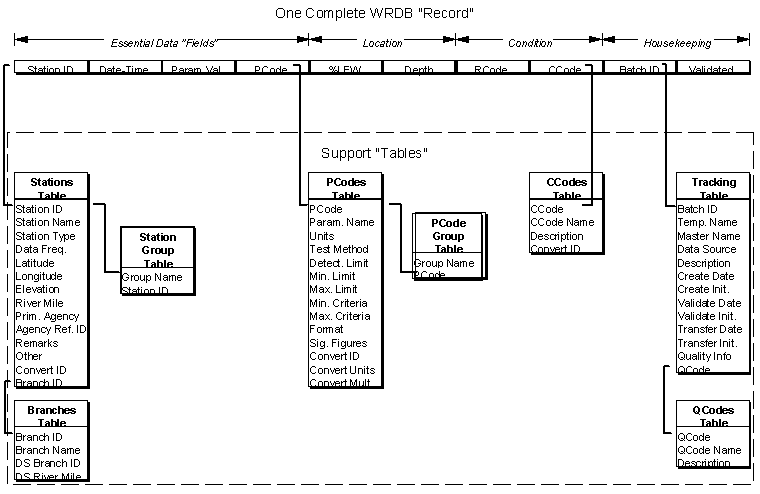|
The Paradox program is used to create and maintain the internal table structures and inter relationships. Appendix B of the Users Manual contains detailed information of field names, allowable values, key fields, etc. Although the user interface shields the average user from most of the complexity of the underlying database structure, the Supervisor should be familiar with the information shown in this appendix. Everyone can gain from a general understanding of the nine table types that comprise the WRDB: · water resources data (Working, Master, and Alternate data files) · Stations · Station Groups · Branches · Parameter Codes (PCodes) · Parameter Code Groups · Compositing Codes (CCodes) · Database Batch Tracking · Quality Codes (QCodes) |



